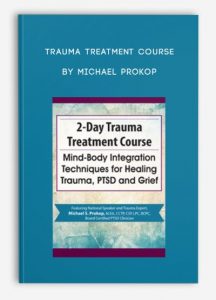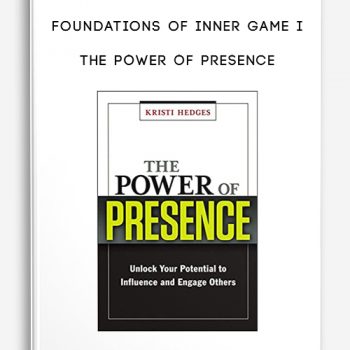 Trauma Treatment Course by Michael Prokop
Trauma Treatment Course by Michael Prokop
More information about Medical:
Medicine is the science and practice of establishing the diagnosis, prognosis, treatment, and prevention of disease.
Medicine encompasses a variety of health care practices evolved to maintain and restore health by the prevention and treatment of illness.
Contemporary medicine applies biomedical sciences, biomedical research, genetics, and medical technology to diagnose, treat, and prevent injury and disease,
typically through pharmaceuticals or surgery, but also through therapies as diverse as psychotherapy, external splints and traction, medical devices, biologics, and ionizing radiation, amongst others.
Medicine has been around for thousands of years, during most of which it was an art (an area of skill and knowledge) frequently having connections to the religious and
philosophical beliefs of local culture. For example, a medicine man would apply herbs and say prayers for healing, or an ancient philosopher and physician would apply bloodletting according to the theories of humorism.
In recent centuries, since the advent of modern science, most medicine has become a combination of art and science (both basic and applied, under the umbrella of medical science).
While stitching technique for sutures is an art learned through practice, the knowledge of what happens at the cellular and molecular level in the tissues being stitched arises through science.
Outline:
The Neuroscience of Trauma
- The Triune Brain and the neurobiology of traumatic stress
- How trauma is held in the body
- Arousal management, learned helplessness, and fear regulation
- Enhance affect regulation
- Somatic re-experiencing of trauma to “attend and befriend” traumatic body sensations and feelings
Trauma and Complicated Grief
- Stages of loss and recovery
- How trauma “freezes” the normal grieving process
- Signs of complicated/traumatic grief
- Factors contributing to complexities in grief
- Grief, bereavement in DSM-5® and viable treatment implications
Assessment of Traumatic Stress
- Diagnostic and Statistical Manual of the APA
- ACEs (Adverse Childhood Experiences) Study and Developmental Trauma
- Diagnose PTSD with the PCL-5
Treatment Approaches to Treat Trauma
- Mindfully observing sensations, feelings, perceptions, and thoughts
- Bottom-up: somatic interventions, sensory motor integration, breathwork
- Top-down: CBT, Rational Emotive Therapy, Positive Self Talk
- Horizontal: EMDR, Bilateral stimulation
Reprocess and Transform Trauma: Treatment Strategies
- Use titration, grounding, centering and pendulation
- Integrate body-oriented and neurologically-based therapy with CBT
- Embodied mindfulness
- Coherent story/experiences and metabolization of traumatic memories
- Breathwork, Progressive Muscle Relaxation, and Autogenics
- Multisensory Guided Imagery and systematic desensitization
- Self-regulation and relaxation
- Art-therapy, play and theatre movement-based interventions
- Sensory integration
- Mindfulness with self-compassion
Posttraumatic Growth: Empowerment and Resilience
- Positive Psychology Interventions
- Navy Seal Mental Toughness Model
- Instill optimism, hope, curiosity and imagination
- Forgiveness, gratitude and positive emotions
- Renewed sense of meaning and purpose
- Use signature strengths
- Enhance relationships and social support
- Self-esteem, self-efficacy and resilience
- Volunteering and giving
- Reconnection to self, family, society and hopes/dreams
Traumatized Children and Adolescents: The Developing Brain, Body and Mind
- High risk characteristics, pre-natal and early life trauma
- Mirror neuron systems, attachment, RAD and brain development
- Disassociation, self-blame, guilt, and shame
- Self-regulation, Interpersonal Neurobiology, impulse control, and frustration tolerance
- Integrate Body Work and Trauma Focused CBT for children
- Brain-based interventions
Limitations of Research and Potential Risks
- No “one size fits all” for any modality of trauma treatment
- Various definitions of trauma with different treatment implications
- Side effects may include an initial increase in symptoms
- Empirical verses anecdotal evidence
Description:
Are you confident in your clinical work with clients suffering from trauma or PTSD?
Or do you have a pit in your stomach after a session with a traumatized client because you fear that you may have done more harm than good?
Despite our best intentions, clients are often triggered or even retraumatized by talking about their experiences before they have the skills to regulate their emotions, calm their bodies and focus on the present.
This common treatment pitfall can lead to client’s withdrawing from the experience, avoiding their thoughts and feelings, or ending therapy all together. By incorporating mindfulness skills, clinicians can help clients to tolerate distressful memories, triggers and emotions in-order-to successfully begin to navigate their trauma narrative and move into post-traumatic growth.
Watch this recording and you will take away evidence-based, best-practice clinical interventions based on the neuroscience of traumatic stress with effective mind-body treatment approaches to have better clinical outcomes! Leave this course with more confidence in your trauma work!













tristian –
This is Digital Download service, the course is available at Coursecui.com and Email download delivery.